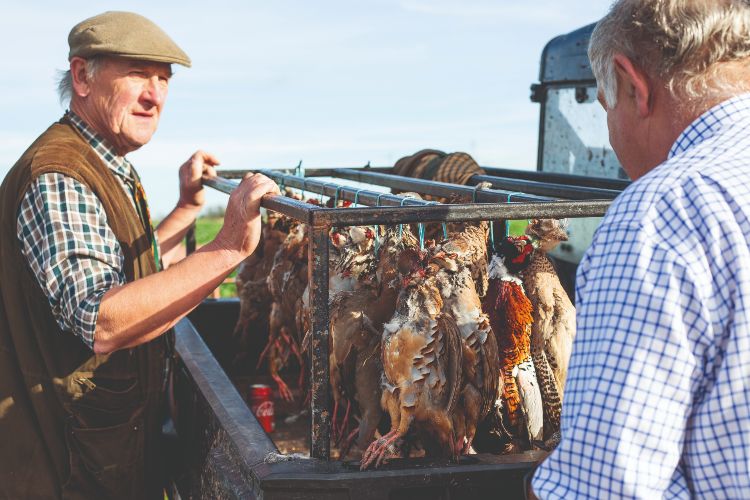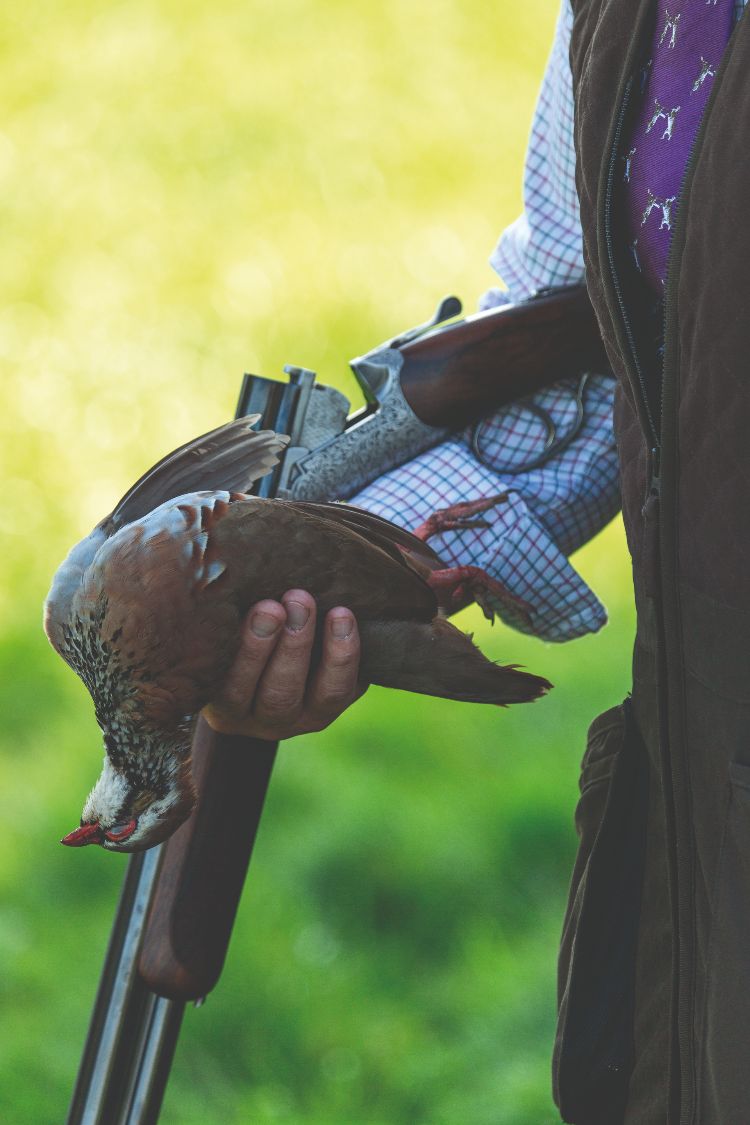Words and photos: Owen Beardsmore/Cervus UK
I grew up in south-east Staffordshire, along the Trent valley, and my village was next to an estate that was specifically managed for partridge shooting from September until early November. It was here, at the age of 11, I first started beating and fell in love with game shooting, and in particular partridge.
Although the ground was quite flat, huge hedges had been specially planted in the early 1800s and the birds were driven out of blocks of sugar beet, which had been cut into strips, and over the tall hedges, causing the birds to flare up and over the Guns that were standing out in the field beyond.
These, of course, were grey partridge, and the gamekeeper who managed the estate was in his late sixties, old school, and definitely one of the last great partridge keepers of a distant age. He relied on wild restocking as much as rearing birds himself. Throughout my teens, the grey partridge was to become supplemented by its red-leg cousin and within a decade we were hardly shooting any greys and the reg-leg had firmly established itself as the new kid on the block (of sugar beet).
 With its explosive flight pattern and greater height, and the fact that it is easier to rear (and some say hardier), it soon took over and by the mid ‘80s most shoots had adopted the Frenchman to their shoots to provide some reliable early-season sport. The poor old grey partridge was out of fashion and the farming methods, lack of rearing, and management of ground for this species saw its gradual decline until it became a vague memory for at least 20 years.
With its explosive flight pattern and greater height, and the fact that it is easier to rear (and some say hardier), it soon took over and by the mid ‘80s most shoots had adopted the Frenchman to their shoots to provide some reliable early-season sport. The poor old grey partridge was out of fashion and the farming methods, lack of rearing, and management of ground for this species saw its gradual decline until it became a vague memory for at least 20 years.
But in this past decade, farming has been encouraged to not plough in every acre and grants for stewardship margins, bird seed game strips and better managed hedgerows have resulted in our native greys beginning to recover – and many shoots have released birds to encourage restocking.
The red-leg way outnumbers the grey nowadays of course, relying on rear-and-release as it is a poor wild breeder. This was all fine until this year when, due to the severity of avian flu in France, all import of eggs and chicks was suspended.
This totally scuppered the commercial partridge season for 2022/23, as around 80% of all red-legged partridge shot in this country would usually originate from an egg or day-old produced in France.
The result is that this season there is something of a partridge drought and only 20% of birds from our home market will be released – a dramatic impact on any Gun who loves his early 'shirt-sleeves' partridge shooting!
Perhaps the future and a more acceptable approach is to actually reduce our dependence on the continent for our birds. A recent survey by the Guns on Pegs team, if I remember correctly, stated that the average acceptable game bird day was around 125 head, and that many of its clients would now decline a 250-bird day. If this trend is true, then surely it is about time we reduced our shoot day bag to focus on the sporting shot, the social aspect and acceptable numbers that go into the food chain.
 Red-leg days
Red-leg days
Each season, I am fortunate enough to be invited on a few days in September and October, with a handful of Guns, to shoot a 50-60 red-leg partridge day over the stubble fields of a local estate.
The day starts around 9.30am, when we meet informally with the keeper, a few beaters and a picker-up, for a coffee and bacon sandwich. We head off and although we have picked our peg numbers, Mick the keeper puts the Guns out as he sees fit and dependent on the previous drive’s success. “Pick your birds, gentlemen!” is his polite request and as it is normally the same few Guns, who shoot together each year, we of course heed his advice.
The small group of beaters fetch in the hedgerows, field margins, and edges of game covers and the birds are driven in a fashion towards us. There are plenty to choose from and as the Guns are spaced quite far apart, we get great sport on high, long crossers. If we are lucky (and accurate), we may shoot a brace and a half each per drive over the four or five drives.
No ground game or pheasant means we have a pure partridge day, except for an end Gun shooting a decent woodpigeon mid-drive. The majority of Guns shoot a 20-bore or a 12-bore with 28g cartridges.
After each drive, the keeper shouts, “Alright... thank you, gentleman!” as he stands amongst us. We unload, pick up our spent cartridges, help the picker-up retrieve any birds behind us and then make our way back to the game cart.
Here we recall our best shots or misses and take a swig of some non-alcoholic refreshment as the days can be warm and sunny, early season. We have a packed lunch in the field with the keeper and his team, and then finish mid-afternoon. The day is generally full of banter and gossip and is a wonderful opportunity to blow away the cobwebs of the off-season. It is never about the bag, but about spending time in good company doing something we love and having a few brace to take home with us afterwards.
This season, the estate has no red-legged partridge to rear and release so there is no shooting for us. As sad as this is, it has caused me to look further afield and I have booked a few days of walked-up grouse in September and then hopefully, depending on numbers, an October day of walked-up grey partridge shooting over pointers in Lincolnshire. If the day comes to fruition, I will definitely be sharing the experience with you readers.
Grey partridge conservation
Scientists at the GWCT have developed a new cover crop seed mix, designed to maximise biodiversity and provide cover and insects as food for grey partridge chicks. Researchers have been trialling the mix, comparing insect numbers with other traditional mixes, as well as arable margins (cultivated uncropped field margins) and winter wheat.
“The PARTRIDGE mix appears to contain considerably higher insect numbers, indicating its usefulness for biodiversity in general and grey partridge chicks in particular,” says senior conservation scientist Francis Buner. “Based on these results, Defra has included the PARTRIDGE mix in their ELMS trial scheme under the name ‘Wildlife Plot’.
“The new mix consists of almost 30 species of plants, 19 of which are native to Britain. It is not only pleasing to the eye, but provides the best possible habitat for insects, grey partridges and other farmland wildlife.”
GWCT ecologists believe that the PARTRIDGE mix is the best wild bird seed mix in the UK for insects, both in quantity and variety of species, and hope that it could be used to boost the fortunes of our beloved, red-listed grey partridge.